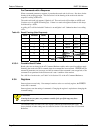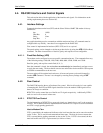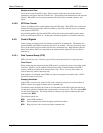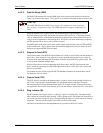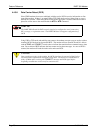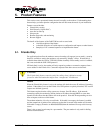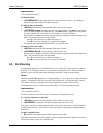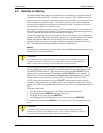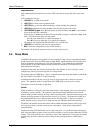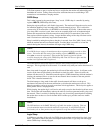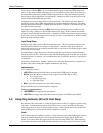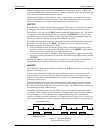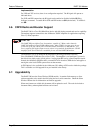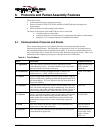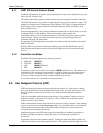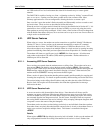
Feature Reference DART 300 Modem
Page 32 2110212 Rev 1.0
Implementation
This implementation description forces use of UDP mode due to the possible fault issues with
TCP.
(AT is omitted for brevity.)
1. +WS45=0 to set UDP service mode.
2. +WS173=1 to ensure auto-registration mode.
3. +WS179=0 to go into data state immediately; without waiting for registration.
4. +WS213=n where n is the index number of the Friend List entry to auto-dial.
5. +WVFRIEND=ip.port where ip is the dotted-decimal IP address and port is a port number
to use for the auto-dial connection.
When you press <enter> the modem will respond with a prompt to confirm the change in the
table. The old and new values are both shown.
Press Y (case insensitive) to confirm the change, or
Press N (or any key other than Y) to cancel the command.
The modem will respond with OK if the NEI is in a valid IP form.
6. +WS216=1 to enable the auto-dial on start-up feature.
7. &W to write the configuration to non-volatile memory.
The modem will invoke the auto-dial on the next reset or power-cycle.
5.4. Sleep Mode
The DART 300 operates on a regulated 12 volts nominal at 1 amp. Power consumption depends
greatly on the local received CDPD signal strength (RSSI), which determines the transmit power
used by the modem, and on the duty cycle of the transmitter. The combination of transmitter
power required by the CDPD network and the quantity and frequency of transmissions will
determine power utilization.
Applications that send data at intervals greater than a few minutes, or only on request, can be
configured to conserve power through the use of sleep modes.
The modem supports CDPD Sleep. This is a network feature that allows the modem to shut down
the radio if there is no traffic for a specified period.
In addition the modem can also use a logic sleep or deep sleep mode to conserve even more
power. This capability works in conjunction with CDPD sleep to avoid any loss of data.
This feature works in all modes of operation.
Details
When the modem is waiting for data from either the host or the network, it does not need to keep
all hardware systems running. The modem can negotiate with the CDPD network to have the
network send a periodic message advising if there is pending traffic. Between these messages, the
modem can be programmed to shut down the receiver (go to sleep). The modem will wake up at
the predetermined intervals to check the network for incoming traffic. If there is no pending
traffic, then the receiver can go back to sleep until the next scheduled notification message.
The DART 300 modem can use this feature and has added additional features called “logic sleep”
and “logic deep sleep” to further reduce power consumption. Each of these sleep modes is
described below.
Applications using TCP should take care in using sleep mode. It is possible that the modem may
enter sleep state during an open session and not be available to receive packets within the TCP idle
timeout. The result would be a lost connection. Even if the connection is not dropped, the remote
terminal may experience extensive retries waiting for the sleeping modem to acknowledge a
packet.



